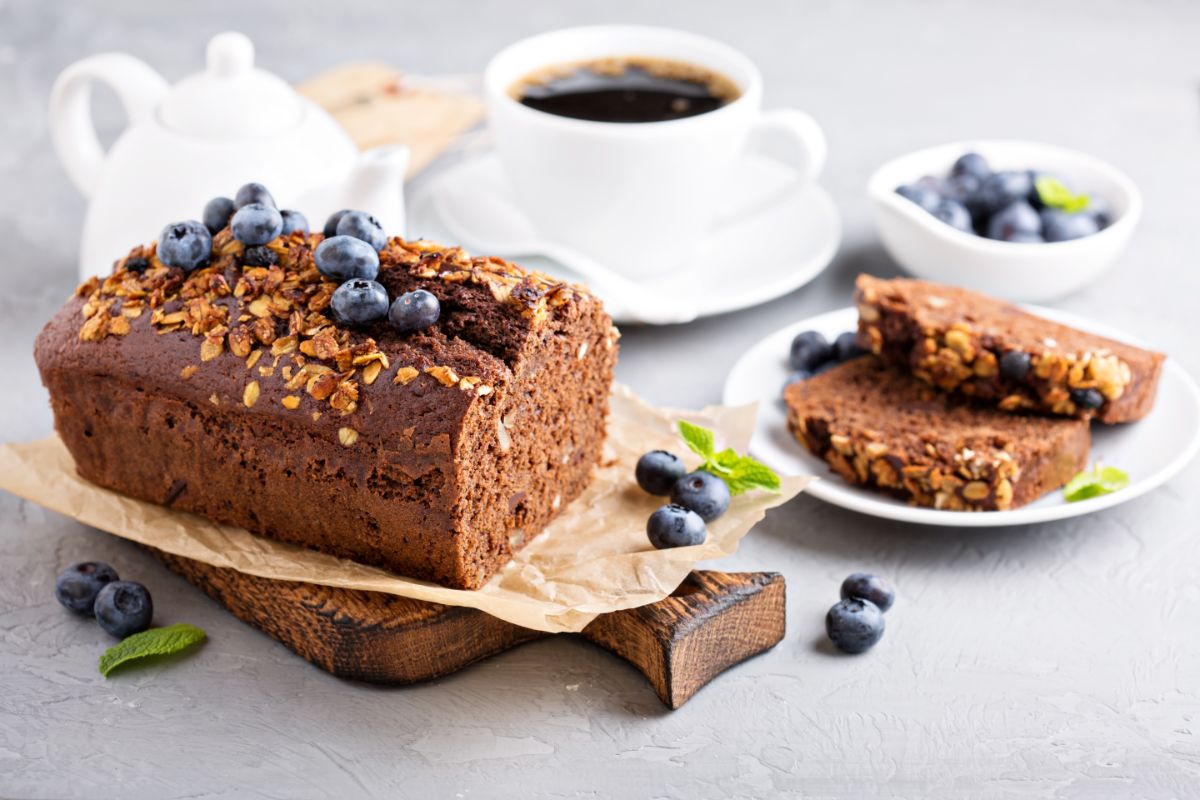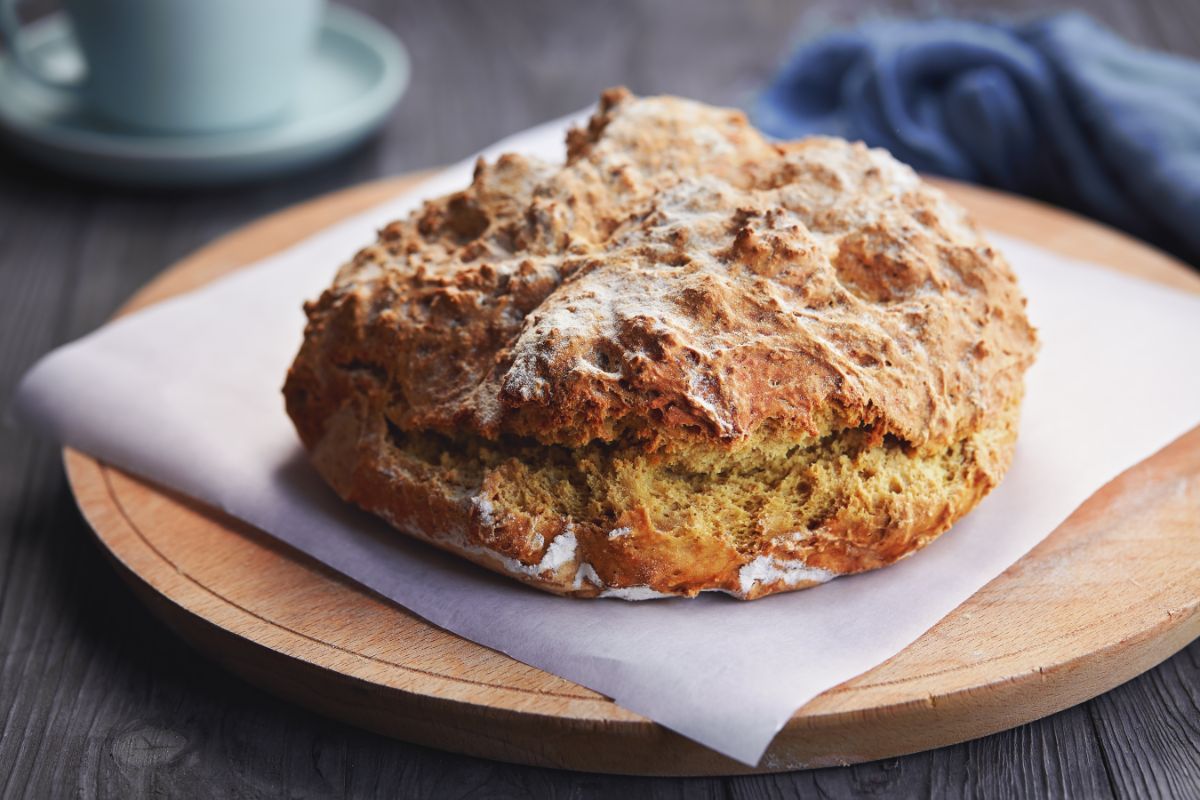Making perfect quick bread can be tricky, especially when it comes to adding the right amount of ingredients. If you stir the dry mixture until the ingredients are moistened, then your batter might end up lumpy. Plus, when you over-mix it, the end product can end up tough with air holes throughout and a sink in the middle.

If the bread’s texture is sort of soggy with a sunken in middle, that means you have added too many liquid ingredients compared to dry. This could also be due to insufficient leavening, undercooked bread, or batter which stood out too long prior to baking.
When your bread is coarse in texture, that is an indication of too much leavening or fat. An overabundance of sugar leaves you with a thick, darkened crust and an overabundance of leavening leads to a bitter aftertaste.
Nut Filled Bread
Unlike traditional quick bread which is best served directly out of the oven, nut bread is better when aged. Make sure to store it overnight prior to slicing, ensuring a nice mellow flavor easier time slicing.
Check on your nut bread every ten to fifteen minutes prior to baking completion, and cover over lightly with aluminum foil if it is rapidly browning. You will probably see a crack at the top of the loaf, no worries for this is typical with nut bread and indicates your batter is expanding as it should.
Quick Bread Storage
Store your quick bread in the refrigerator for up to one week, or you can store it in the freezer for 3 months. Place cooled bread into freezer-safe containers or storage bags. When
Store them in the refrigerator for up to 1 week. To freeze for up to 3 months, place completely cooled loaves in freezer containers or bags. Thaw the wrapped loaves overnight in the refrigerator.
Tips for Perfect Quick Bread Loaf

- Once you have added the liquid ingredients to the flour, stir the contents until just slightly moistened. It is ok to leave behind some lumps, this ensures a soft bread with no holes or peaks.
- Prevent rims from developing around the outer edges of quick bread by putting oil on the bottom of the baking pan and ½ inch up each side.
- Check your quick bread at least ten to fifteen minutes before baking completion. Cover with aluminum foil if browning too quickly.
- Using a wooden toothpick, insert near its center of quick bread until clean, this is an indication that your bread is done. If there is wet dough on the toothpick, place it back in the oven and continue to bake for ten more minutes.
- If there is a crack upon the top of your quick bread, don’t be discouraged for it’s a natural characteristic of this type of bread.
- Test the oven temperature with an oven thermometer to confirm your oven’s actual temperature is accurate.
- When using glass baking pans turn down your oven temperature by 25 degrees.
- Do not use excess liquid ingredients and make sure the wet to dry ratio is correct.
- Place your quick bread immediately into the oven after all ingredients are mixed.
- Set your loaf baking pan on the center oven rack for best results.
- Cool off your quick bread while still in the pan for at least ten minutes, then remove it and place it upon a wire kitchen rack.
Mixing Your Quick Bread Batter
The key to making moist, quick bread that’s tender is using a gentle touch while mixing.
Combine your dry ingredients into a large mixing bowl (salt, flour, leavening, and baking spices). Sift together or stir using a wire kitchen whisk.
In a separate bowl, combine the sugar, eggs, and fat as the recipe recommends. Stirring in additional ingredients like flavor extracts and fruit filling to your wet ingredients.
Once all of the ingredients are thoroughly mixed then you combine them together. Pour your dry ingredients with those which are wet, gently folding them over together by hand.
Add in any nuts and fruits; stirring occasionally until incorporated. Avoid over mixing or you might end up with tough quick bread.
Quick Bread Glaze
For the perfect finishing touch add some glaze to your quick bread and savor the sweet flavor. All it takes is a bit of confectioner’s sugar, almond milk, and/or your favorite fruit juice. Orange and lemon juices tend to work well with their tart zingy flavor.
Fixing Your Common Quick Bread Issues
1. Quick Bread Sticking to Pan
Unless you use a durable nonstick silicone or metal baking pan, apply plenty of grease to the pan prior to pouring in your bread batter. Cooking shortening seems to work best than most other types of fats.
Helping to create a barrier between the baking pan and the quick bread batter. Or, if you’d prefer to use a name-brand cooking spray, that will also do the job as well.
Another way of preventing your bread from sticking to the pan is by removing it after 10 minutes of cooling.
2. Large Cracks Down the Center of Quick Bread Loaf
If a crack happens to appear on the top of your loaf of quick bread do not break into a sweat, this is a normal occurrence with this kind of bread.
Dust it off with some confectioners’ sugar or a drizzle of icing and voila, you have an amazing dessert.
3. Discolored Quick Bread Blueberry Muffins
In combination with the alkaline in baking soda, blueberries have a natural pigment that turns green.
Roll your blueberries in flour mix prior to stirring ingredients in, but, if you want to use frozen blueberries, do not bother thawing them out prior to baking.
4. Quick Bread Appears to Be Done on the Outside But Is Raw In the Center
A common issue tends to be caused by various factors. For instance, your oven’s temperature might be set too high. So, try turning it down a notch or two and cover with foil to prevent the bread from burning.
